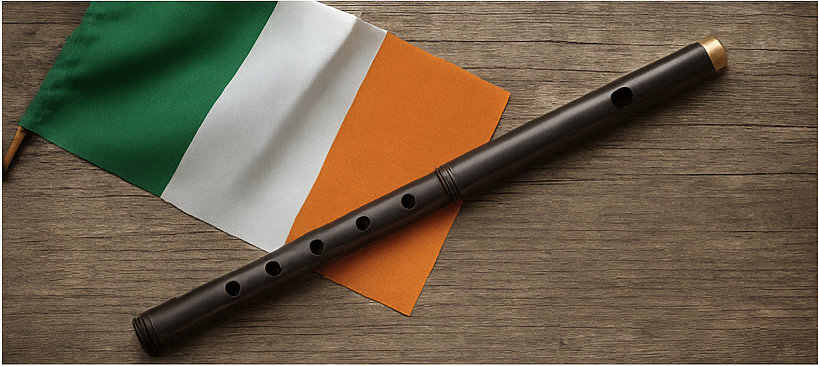The haunting, lilting sound of the traditional Irish flute has charmed listeners for centuries. Whether you’re a flutist looking to explore new styles or simply someone who loves the rich history of Celtic music, learning the traditional Irish flute opens a door into a timeless musical tradition.
In this post, we’ll explore the history of the Irish flute, what makes it unique, and how you can start playing it—no matter your level.
A Brief History of the Traditional Irish Flute
Traditional Irish music has deep roots, passed down through generations by ear rather than sheet music. While many associate the tin whistle or fiddle with Irish folk tunes, the wooden simple-system flute became a popular instrument in the 19th century, particularly in the western and southern counties of Ireland.
Unlike the modern silver Boehm-system flute used in orchestras today, the Irish flute is typically made of wood, with a conical bore and six finger holes. Its warm, earthy tone suits the soulful melodies and energetic jigs of Irish music.
In many ways, the Irish flute carries both the joy and melancholy of the country’s history—its migration, its celebrations, and its deep love of storytelling through song.
What Makes the Irish Flute Unique?
The traditional Irish flute differs from classical flutes in several ways:
-
Material: Usually made of wood (ebony, rosewood, or African blackwood), which gives it a darker, richer sound.
-
Keyless Design: Most Irish flutes are “simple system,” meaning they have fewer keys or none at all. Notes are played by covering tone holes with the pads of your fingers.
-
Tone and Technique: Irish flute music relies heavily on ornamentation like rolls, cuts, and taps—techniques that give the music its distinctive bounce and flavor.
It’s not just about playing notes; it’s about infusing every phrase with emotion and movement.
How to Start Learning the Irish Flute
Whether you already play the flute or are just beginning your journey, learning the traditional Irish flute can be an exciting and rewarding challenge.
1. Choose the Right Flute
If you’re just starting out, you don’t necessarily need a high-end wooden flute. There are beginner models and polymer flutes that are more affordable and durable. Look for a keyless simple-system flute in the key of D, which is the most common for Irish music.
2. Learn the Style
Irish flute playing is less about sheet music and more about listening. Start by immersing yourself in traditional Irish recordings. Artists like Matt Molloy, Joanie Madden, and Catherine McEvoy are great places to start.
Listening will help you understand the phrasing, breathing, and ornamentation that make Irish flute music come alive.
3. Take Lessons (Online or In Person)
If you’re serious about learning the Irish flute, lessons can help you develop the right techniques from the start. Many flute teachers (including those who teach classical or Boehm flute) are now offering instruction in traditional Irish styles. At CountryFlutist.com, you can explore lessons tailored to your goals—whether you’re a beginner or an experienced player wanting to branch into Irish music.
4. Play with Others
Irish music is meant to be shared. Look for local Irish sessions, festivals, or online communities where you can play tunes with others. Start with simple jigs like “The Kesh” or reels like “Cooley’s Reel” and build from there.
Embrace the Spirit of the Irish Flute
The traditional Irish flute isn’t just an instrument—it’s a connection to a living tradition. Whether you’re drawn to its wistful airs or toe-tapping reels, learning the Irish flute invites you to become part of a vibrant global community of musicians.
So pick up your flute, find your favorite tune, and let the music carry you to the green hills of Ireland.
Ready to learn more or book a lesson? Visit CountryFlutist.com to get started with traditional Irish flute music today!



















